
Is plant-based shirako worth putting in your mouth?
In Japanese, there’s a phrase, kuwazugirai, which means to dislike something even though you’ve never tried it. It can be applied to anything, but the literal translation of kuwazugirai means “to hate something without having eaten it,” which is a prime example of how some people bristle at foods they’re not accustomed to but might love if they’d just try a taste.
However, in some situations you can kind of see how someone could feel an aversion, or even repulsion, towards something that’s biologically edible even having never put it in their mouth, such as with shirako, which is fish sperm. And no, shirako isn’t just a drop or two of potential future fishies added as a little extra seasoning. Shirako sushi (the most common way to eat it) involves a generous dollop of the creamy stuff, as shown in the photo here.
▼ Note: This shirako sushi has been garnished with yuzu zests; fish in Japan don’t jizz citrus fruit peels.
Though it’s not super-hard to find in Japan, shirako is still a pretty divisive food, and our Japanese-language reporter Snufkin has politely declined every opportunity she’s ever been presented with to try it. Her interest was aroused, though, when she was browsing the shelves of her local 7-Eleven branch and came across imitation shirako, made out of tofu.
This is the newest addition to tofu maker Sagamiya Foods’ Beyond Tofu line, which also includes imitation uni (sea urchin). Ordinarily when the food industry uses the term “beyond [something]” it’s an indicator that tofu is being used to replicate something, like a “beyond burger” being a tofu-based hamburger substitute. So calling something “Beyond Tofu” feels a little strange…but what feels even more shocking, of course, is that tofu-based imitation fish sperm exists.
Intrigued, Snufkin decided to pick up a pack of Beyond Tofu that’s Like Shirako, as the product is officially named, for 246 yen (US$1.65).
Opening up the package, she could immediately detect a smell reminiscent of imitation crab (imitation crab made from other fish, not from tofu). Visually, tofu-based imitation shirako is arguably less intimidating than the real thing, since tofu and shirako actually look quite similar to each other, but most people are far less likely to be grossed out looking at tofu.
The shirako Beyond Tofu comes with a packet of kombu (kelp) ponzu sauce, which Snufkin poured on after plating it.
After taking a moment to steady her nerves, Snufkin took a bite, and…
…it…was good? Yeah, good…she could hardly believe it, but after a life spent avoiding eating shirako, from her first taste of imitation shirako, she liked it.
The first thing she noticed was the texture, which is distinctly different from regular tofu. As you probably already imagined/feared, it’s sticky, with a smooth surface area but a finely fibrous quality. It’s also a little denser than normal tofu, feeling close to gomadofu (sesame tofu), but melts once it reaches the warmth inside your oral cavity.
There’s definitely a fishy quality to the flavor, but it’s not as intense as Snufkin had worried it might be. Surprisingly, though, you can also taste the soybeans, and not in a cheap “Ah, they don’t know how to cover up the flavor of the tofu” kind of way. Instead, Snufkin felt like there was a harmonious and delicious combination of fish and soy flavors at play on her taste buds.
Since this is something she wouldn’t mind eating again, Snufkin next decided to check the nutritional information of the shirako Byond Tofu. After all, a big selling point of plant-based foods is that they’re supposed to be healthier, right?
A 100-gram (3.5-ounce) serving of real shirako contains approximately 60 calories, 0.8 grams of fat, and 0.2 grams of carbohydrates. Looking at the nutrition facts on the Beyond Tofu package and converting them to a 100-gram serving, the imitation shirako has 184 calories, 14.9 grams of fat, and 6.9 grams of carbohydrates. In other words, the plant-based fish sperm has over three times as many calories, 18 times as much fat, and 34 times as many carbs as actual shirako. The imitation shirako does have one distinct health advantage, though, in that it’s purine-free, while actual shirako has a pretty high purine-count, so if you’re already an established shirako lover who’s suffering from gout but have room to spare for your calorie, fat, and carb intakes, it could be a viable option, numerically.
With Snufkin never having tried actual Shirako, she can’t say how close of an approximation Beyond Tofu provides. Judged in and of itself, though, she’s very happy with how the imitation shirako tastes, and now finds herself wondering if actual shirako, which she’s long hated without trying, might be something she’d love too.
Photos ©SoraNews24
● Want to hear about SoraNews24’s latest articles as soon as they’re published? Follow us on Facebook and Twitter!
[ Read in Japanese ]

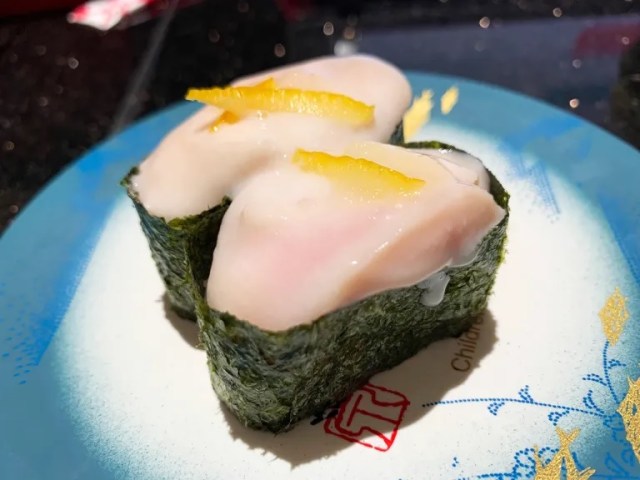
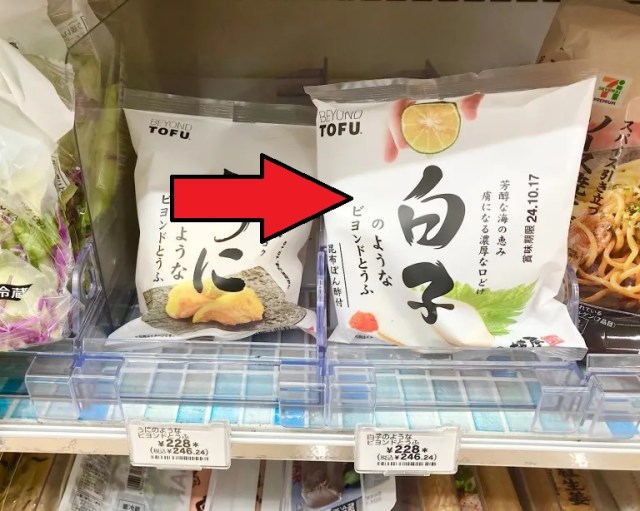
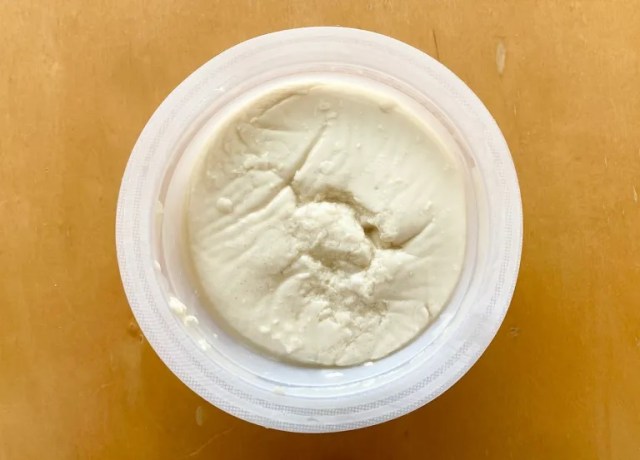
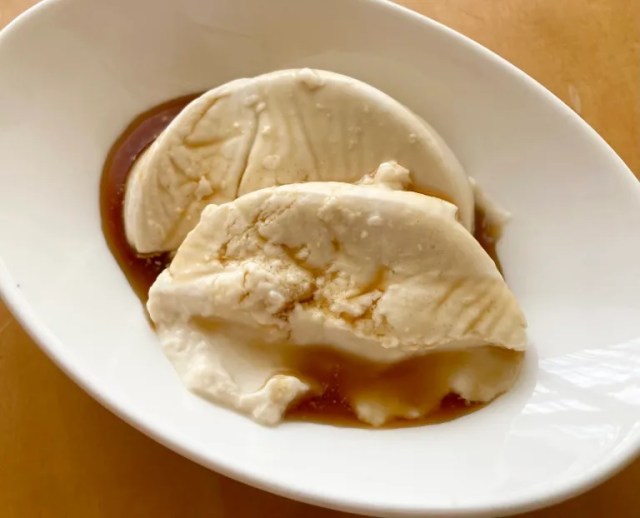
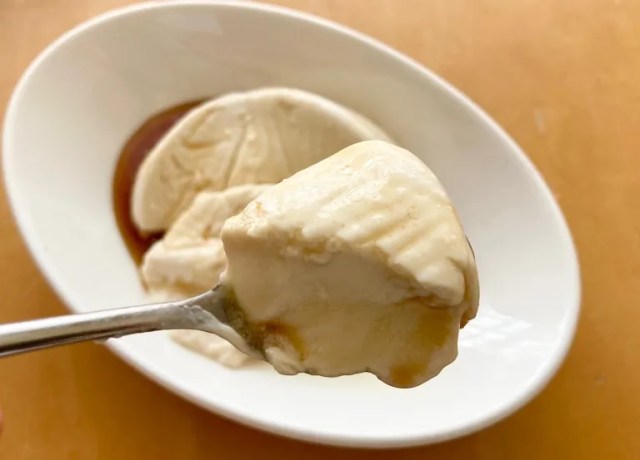
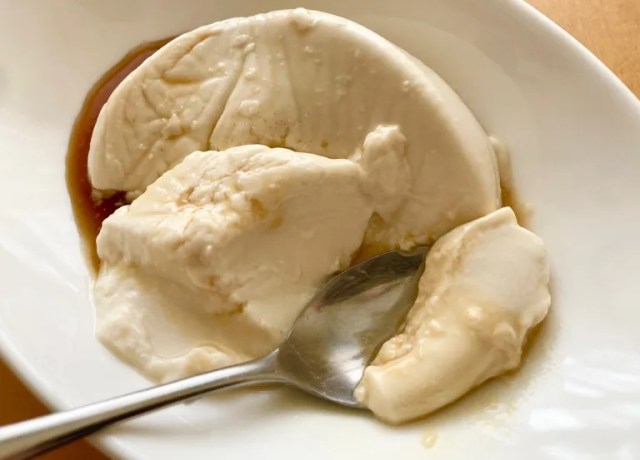
 Living the fake high life with Beyond Tofu That’s Like Foie Gras【Taste test】
Living the fake high life with Beyond Tofu That’s Like Foie Gras【Taste test】 7-Eleven Japan now has two tiers of salmon rice balls, but is the new, cheaper one any good?【Taste test】
7-Eleven Japan now has two tiers of salmon rice balls, but is the new, cheaper one any good?【Taste test】 I can’t believe it’s not fish eggs? Taste-testing Japan’s imitation “almost ikura”【Photos】
I can’t believe it’s not fish eggs? Taste-testing Japan’s imitation “almost ikura”【Photos】 It looks like fish, but does it taste like it? Imitation tuna almost breaks our minds 【Taste test】
It looks like fish, but does it taste like it? Imitation tuna almost breaks our minds 【Taste test】 Do 7-Eleven Japan’s new back-to-budget-friendly-basics rice bowls make us happy?【Taste test】
Do 7-Eleven Japan’s new back-to-budget-friendly-basics rice bowls make us happy?【Taste test】 We followed Tokyo’s mystery walking map and ended up creating our own bar-hopping adventure
We followed Tokyo’s mystery walking map and ended up creating our own bar-hopping adventure Pokémon Lego kits are finally on their way!【Photos】
Pokémon Lego kits are finally on their way!【Photos】 Japanese women showing rebounding interest in giving Valentine’s Day chocolate【Survey】
Japanese women showing rebounding interest in giving Valentine’s Day chocolate【Survey】 Starbucks Japan releases new drinkware and goods for Valentine’s Day
Starbucks Japan releases new drinkware and goods for Valentine’s Day Yoshinoya adds first-ever chain-wide ramen with new beef and pork-broth noodle hot pot meals
Yoshinoya adds first-ever chain-wide ramen with new beef and pork-broth noodle hot pot meals Japanese avoiding domestic travel as foreign tourists increase, possibly creating vicious cycle
Japanese avoiding domestic travel as foreign tourists increase, possibly creating vicious cycle Japanese mom’s sketchbook of amazing anime character designs from 50 years ago amazes daughter
Japanese mom’s sketchbook of amazing anime character designs from 50 years ago amazes daughter Kagoshima conveyor belt sushi chain Mekkemon rises above the rest with its special secret weapon
Kagoshima conveyor belt sushi chain Mekkemon rises above the rest with its special secret weapon Beyond sakura: How to tell a cherry blossom from a plum or peach flower
Beyond sakura: How to tell a cherry blossom from a plum or peach flower Nearly one in ten young adults living in Japan isn’t ethnically Japanese, statistics show
Nearly one in ten young adults living in Japan isn’t ethnically Japanese, statistics show 10 times to avoid traveling in Japan in 2026
10 times to avoid traveling in Japan in 2026 Our 52-year-old pole dancing reporter shares his tips for achieving your New Year’s exercise goal
Our 52-year-old pole dancing reporter shares his tips for achieving your New Year’s exercise goal Starbucks Japan releases new Frappuccino and latte for Valentine’s Day
Starbucks Japan releases new Frappuccino and latte for Valentine’s Day Ramen restaurant’s English menu prices are nearly double its Japanese ones, denies discriminating
Ramen restaurant’s English menu prices are nearly double its Japanese ones, denies discriminating Umamusume anime girl plushie recalled for having parts she absolutely should not have【Pics】
Umamusume anime girl plushie recalled for having parts she absolutely should not have【Pics】 Princess Mononoke magnets return just in time to treat yourself to awesome anime decorations
Princess Mononoke magnets return just in time to treat yourself to awesome anime decorations Top Japanese cosplayer Enako returns to Comiket after 6 years, creates mayhem with admirers
Top Japanese cosplayer Enako returns to Comiket after 6 years, creates mayhem with admirers Giant hotel rooms in Osaka reflect the new non-niche face of travel in Japan.
Giant hotel rooms in Osaka reflect the new non-niche face of travel in Japan. We ate sushi made from Japan’s most expensive tuna ever【Taste test】
We ate sushi made from Japan’s most expensive tuna ever【Taste test】 Japanese beef bowl chain Sukiya’s 2026 Smile Box lucky bag basically pays for itself
Japanese beef bowl chain Sukiya’s 2026 Smile Box lucky bag basically pays for itself Starbucks Japan ready to get Year of the Horse started with adorable drinkware and plushies【Pics】
Starbucks Japan ready to get Year of the Horse started with adorable drinkware and plushies【Pics】 7-Eleven Japan starts new temporary luggage storage service in over 300 branches
7-Eleven Japan starts new temporary luggage storage service in over 300 branches Disillusionment at Tsukiji’s tourist-target prices led us to a great ramen restaurant in Tokyo
Disillusionment at Tsukiji’s tourist-target prices led us to a great ramen restaurant in Tokyo Starbucks teams up with 166-year-old Kyoto doll maker for Year of the Horse decorations【Photos】
Starbucks teams up with 166-year-old Kyoto doll maker for Year of the Horse decorations【Photos】 Tokyo’s Tsukiji sushi neighborhood asks tour groups to stay away for the rest of the month
Tokyo’s Tsukiji sushi neighborhood asks tour groups to stay away for the rest of the month Japan may add Japanese language proficiency, lifestyle classes to permanent foreign resident requirements
Japan may add Japanese language proficiency, lifestyle classes to permanent foreign resident requirements Survey asks foreign tourists what bothered them in Japan, more than half gave same answer
Survey asks foreign tourists what bothered them in Japan, more than half gave same answer Japan’s human washing machines will go on sale to general public, demos to be held in Tokyo
Japan’s human washing machines will go on sale to general public, demos to be held in Tokyo We deeply regret going into this tunnel on our walk in the mountains of Japan
We deeply regret going into this tunnel on our walk in the mountains of Japan Studio Ghibli releases Kodama forest spirits from Princess Mononoke to light up your home
Studio Ghibli releases Kodama forest spirits from Princess Mononoke to light up your home Major Japanese hotel chain says reservations via overseas booking sites may not be valid
Major Japanese hotel chain says reservations via overseas booking sites may not be valid Put sesame oil in your coffee? Japanese maker says it’s the best way to start your day【Taste test】
Put sesame oil in your coffee? Japanese maker says it’s the best way to start your day【Taste test】 No more using real katana for tourism activities, Japan’s National Police Agency says
No more using real katana for tourism activities, Japan’s National Police Agency says Starbucks Japan reveals new sakura drinkware collection, inspired by evening cherry blossoms
Starbucks Japan reveals new sakura drinkware collection, inspired by evening cherry blossoms Updated cherry blossom forecast shows extra-long sakura season for Japan this year
Updated cherry blossom forecast shows extra-long sakura season for Japan this year Human washing machine pods coming to Japanese hotels【Photos】
Human washing machine pods coming to Japanese hotels【Photos】 Does Japan’s new low-calorie convenience store fried chicken have any reason to exist?【Taste test】
Does Japan’s new low-calorie convenience store fried chicken have any reason to exist?【Taste test】 These 7-Elevens are gettin’ fancy! We try their pate and terrine【Taste Test】
These 7-Elevens are gettin’ fancy! We try their pate and terrine【Taste Test】 Three great mint chocolate sweets to buy at 7-Eleven while the summer heat gives us an excuse
Three great mint chocolate sweets to buy at 7-Eleven while the summer heat gives us an excuse We predict 7-Eleven’s new Zero Cider Triple drink is gonna be the hit drink of 2022【Taste Test】
We predict 7-Eleven’s new Zero Cider Triple drink is gonna be the hit drink of 2022【Taste Test】 The Fuwatoro Yamaimo Teppan just might be 7-Eleven Japan’s dish of the year【Taste test】
The Fuwatoro Yamaimo Teppan just might be 7-Eleven Japan’s dish of the year【Taste test】 10 things you should buy at 7-Eleven in Japan
10 things you should buy at 7-Eleven in Japan Should you warm up your convenience store onigiri rice balls in the microwave?【Taste test】
Should you warm up your convenience store onigiri rice balls in the microwave?【Taste test】 5 reasons why this new 7-Eleven ice cream is amazing
5 reasons why this new 7-Eleven ice cream is amazing Japan’s snack of almonds and whole fish might not be for everyone【Taste test】
Japan’s snack of almonds and whole fish might not be for everyone【Taste test】 7-Eleven Japan’s ramen-cooking robot whipped us up a bowl of noodles【Taste test】
7-Eleven Japan’s ramen-cooking robot whipped us up a bowl of noodles【Taste test】 7-Eleven Japan now has plant-based vegetarian steamed “meat buns”
7-Eleven Japan now has plant-based vegetarian steamed “meat buns” 7-Eleven Japan’s sweet potato smoothie goes viral on social media
7-Eleven Japan’s sweet potato smoothie goes viral on social media We try 7-Eleven Japan’s latest fancy desserts: ice cream macarons【Taste test】
We try 7-Eleven Japan’s latest fancy desserts: ice cream macarons【Taste test】 To celebrate 7-Eleven Day, here are seven 7-Eleven Japan items that need more love
To celebrate 7-Eleven Day, here are seven 7-Eleven Japan items that need more love Rage against the smoothie machine with this 7-Eleven drink hack【Taste test】
Rage against the smoothie machine with this 7-Eleven drink hack【Taste test】 7-Eleven Japan powers up even more with new baked-in-store breads and pastries【Taste test】
7-Eleven Japan powers up even more with new baked-in-store breads and pastries【Taste test】
Leave a Reply